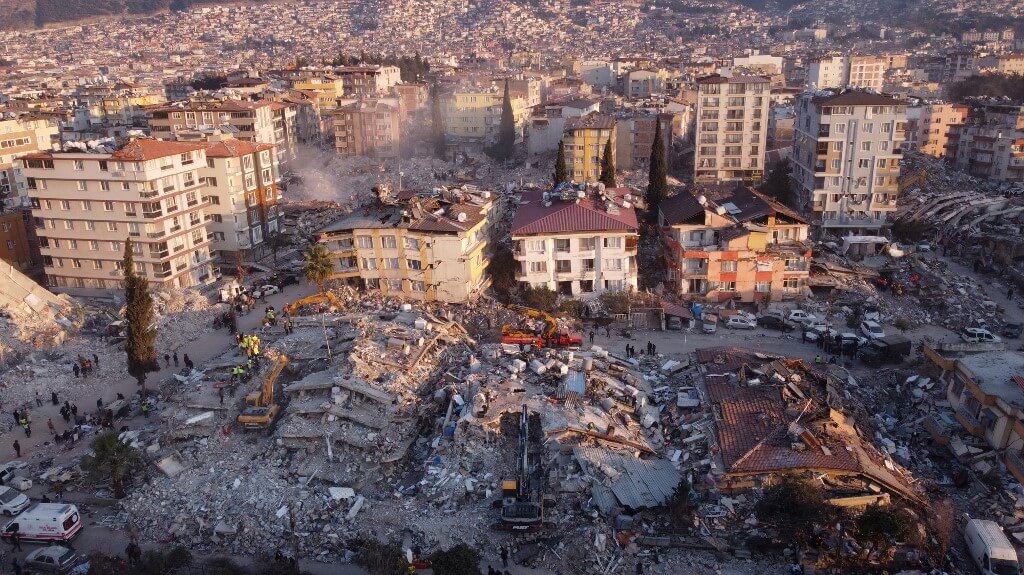The Chamber of Environmental Engineers has warned that the incredible amount of debris from thousands of buildings that were demolished in earthquakes that struck southeastern Turkey in February poses serious dangers to public health and the environment, the Stockholm Center for Freedom reported, citing Deutsche Welle Turkish service.
The environmental engineers said in an optimistic estimation that the earthquakes, which affected 11 provinces, had resulted in 104 million tons of debris that also includes chemical, medical and industrial waste as well as asbestos and sewage.
Aslı Odaman, from the Department of Urban and Regional Planning at Mimar Sinan University, said industrialization had been dense in the earthquake zones; therefore, it was very difficult to determine what kind of material had been mixed into the soil.
“In addition to industrial waste, there are hospitals that have been completely turned into rubble. It’s safe to assume that a considerable amount of medical waste has found its way into the soil,” Odaman said. “Moreover, lead in paint and other types of heavy metals have been mixed into the ground.”
Environmental experts said they feared authorities had not disposed of rubble according to regulations. The responsibility for wreckage removal and disposal of debris lies with the Ministry of Environment, Forestry and Urbanization and the Disaster and Emergency Management Authority (AFAD).
The ministry said in a statement that they would take all precautions to clear the debris safely. Environmental experts who inspected the disaster area said they were alarmed to see these promises were not kept and that the debris had been moved from the cities to places where they could easily mix with water supplies and agricultural areas.
More troublingly, the ministry did not give details on which companies won tenders to remove and dispose of the debris. Experts agreed more transparency was needed in the handling of the rubble.
“It is essential that authorities work with environmentalists in handling the rubble,” said Odaman. “The long-term effect of mishandling the rubble will be devastating. The toxic waste will have an impact on a very wide area if it mixes with water sources. This poses a danger not only to Turkey but also to neighboring countries.”
Utku Fırat from the Chamber of Environmental Engineers said dangerous amounts of heavy metals, sewage and oil were being handled but that experts didn’t know who was handling this waste and where they were depositing it.
“There are 19 locations where waste is deposited after a disaster. We know about seven of these places, but 12 are a mystery. There is absolutely no transparency,” he said, adding, “Authorities need the expertise of engineers and environmentalists, but instead of consulting us, they’re leaving us out.”
Fırat explained that some disposal sites were located close to the Orontes River, while others were near tent cities, olive orchards and irrigation canals. He called on the public to file complaints if they witness rubble and waste being mishandled.

